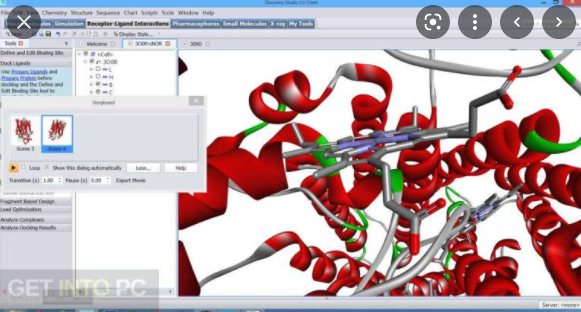

This technique gives the knowledge on drug-receptor interactions that may be used to anticipate how the drug model will bind to the target proteins 12 leading to reliable binding at the binding sites of ligands 13. Molecular docking is an efficient and low-cost approach for creating and testing pharmaceuticals. Computational prediction models are utilized in the in silico prediction of pharmacological, pharmacokinetic and toxicological production and play a crucial role in the selection of procedure leading to pharmaceutical and technological advancement 11. Also, computer-based tools have evolved as sophisticated drug discovery approaches that may be used to screen medicines from bioactive compounds present in medicinal plants 10. GC–MS is a reliable technique for the identification of various compounds such as alkaloids, flavonoids, organic acids, amino acids etc. Fourier-transformed infrared (FTIR) and Gas chromatography-mass spectrometry (GC–MS) have been widely used for observation of functional groups and identification of various bioactive compounds present in plants 7, 8. The extraction and characterization of these bioactive compounds have resulted in the delivery of specific medications with a high-activity profile 6. The development of acceptable screening procedures is critical in the search for novel chemicals as well as in quality control 5. Various plant species contain a vast pool of secondary metabolites but only a few of them have been studied and proven to be a substantial source of bioactive compounds. Plant-derived medicines are frequently prepared from crude extracts, which include a complex combination of various phytochemicals and are utilized to treat both chronic and infectious diseases 4. Medicinal plants have a wide range of bioactive compounds that have antimicrobial, anticancer, anti-inflammatory and antioxidant potentials. In India, especially in the rural northeastern (NE) region, the use of traditional medicine is a common practice that may be due to the availability of diverse vegetation and the socio-economic conditions of the people of the region 3. In developing countries like India, the use of traditional medicines are the primary source of the health care system and the presence of phytochemical compounds are the main reasons for the use of plants in the traditional practice of medicines 2. They contain a wide range of compounds like lipids, phytochemicals, pharmaceutics, flavors and fragrance and have been used in food, pharmaceutical and cosmetics industries etc.


Plants, not only provide essential nutrients for humans, but also provide biologically active compounds that are beneficial for the human health and treatment of various diseases 1. timoriana and perhaps leading to the creation of new medications. This study can lead to the production of new herbal medicines for various diseases employing P. timoriana extracts showing antioxidant, antimicrobial and pharmacological significance. To the best of our knowledge, this is the first-hand report on the bioactive compounds of edible parts of P. Subsequently, in silico molecular docking studies of the identified bioactive compounds predicted potential anticancer and anti-inflammatory properties. The GC–MS analysis also revealed the occurrence of 49 bioactive compounds that are known to possess a variety of pharmacological activities. Characteristic peaks of phenols, carboxylic acids, alkenes, glycogen, alkyl halides, halogen, aliphatic amines, primary and secondary amines, esters, ether, aromatics, lipids, triglycerides, nitro compounds that had antimicrobial, anti-cancer and anti-inflammatory properties etc. Fourier transform infrared spectroscopy and gas chromatography-mass spectrometry (GC–MS) analyses of the extracts revealed the functional groups and bioactive compounds present in different edible parts of the plant. timoriana extract showed significant antibacterial potential against Bacillus pumilus, Bacillus subtillis, Escherichia coli and Pseudomonas aeruginosa. A significant DPPH (2,2-diphenyl-1-picrylhydrazyl), ABTS (2,2’-azino-bis (3-ethylbenzothiazoline-6-sulfonic acid)), and Phosphomolybdate scavenging activity corresponding to high antioxidant potentials was shown by the extracts from different edible parts of P. Parkia timoriana (Yongchak/Zawngtah), one of the most important underutilized plants popularly consumed in Manipur and Mizoram states of Northeastern region of India, is known for its ethnobotanical and ethnomedicinal values. The phytochemical constituents have enormous potential in treating both plant and human diseases. Plants are excellent sources of functionally bioactive compounds and essential nutrients.


 0 kommentar(er)
0 kommentar(er)
